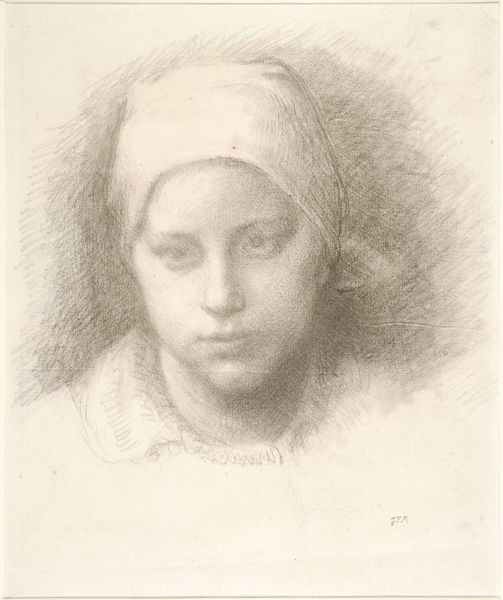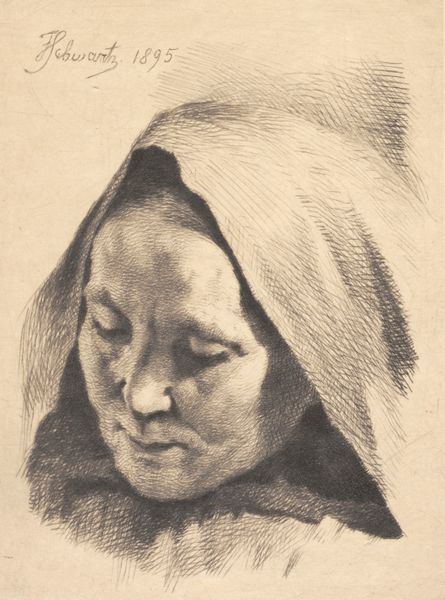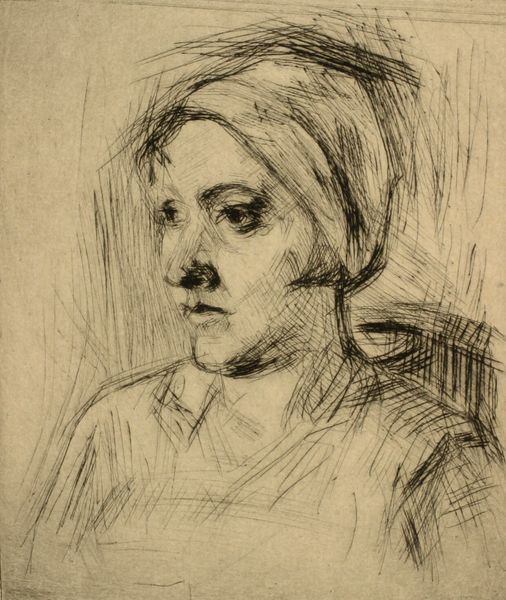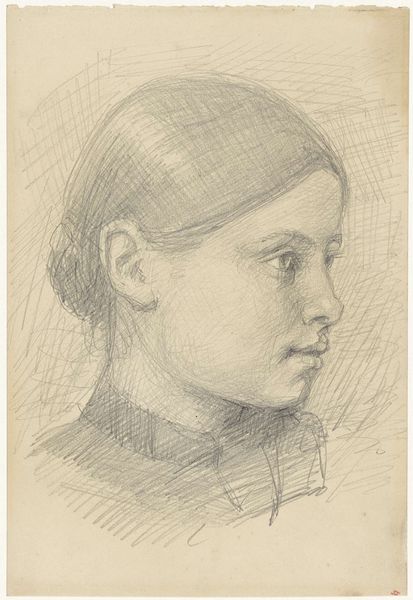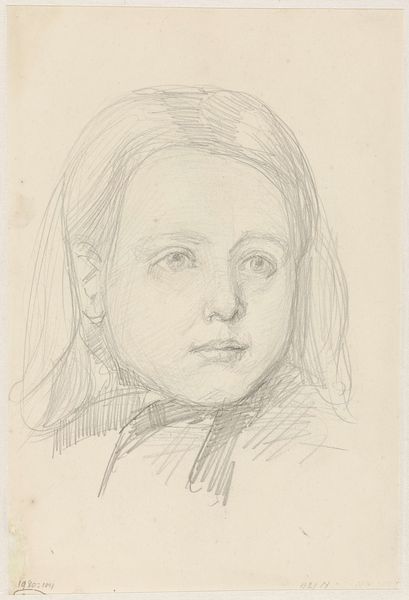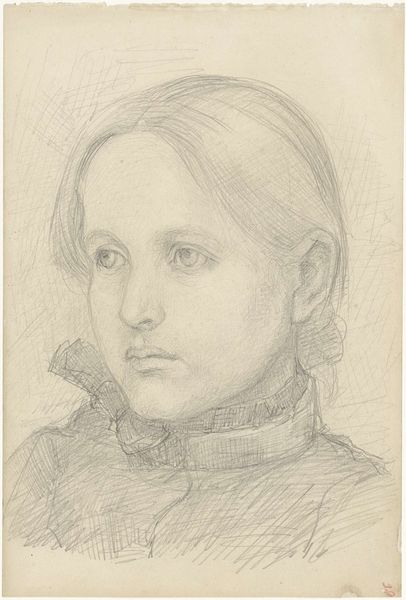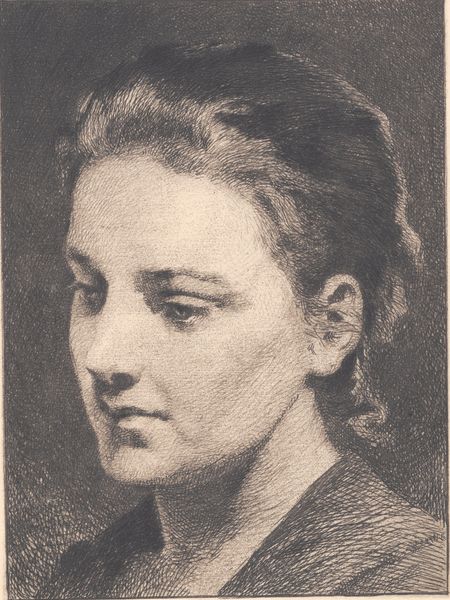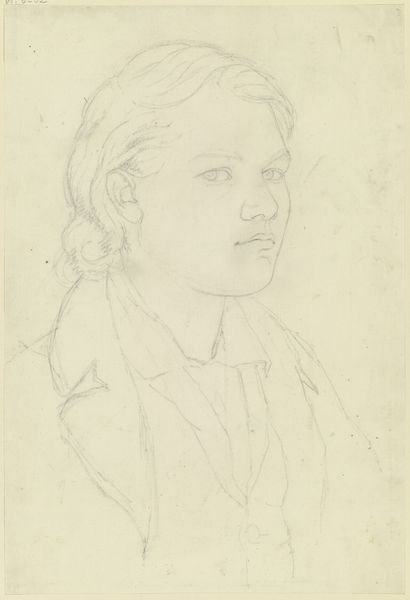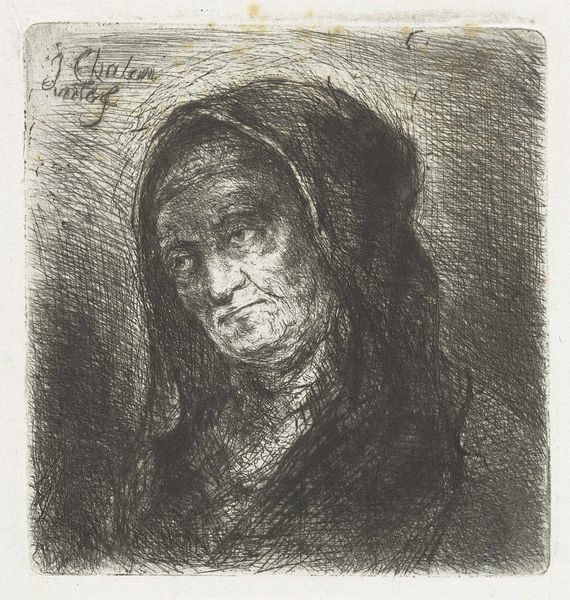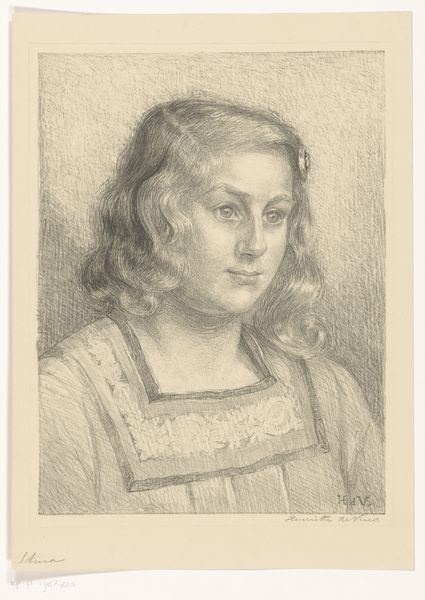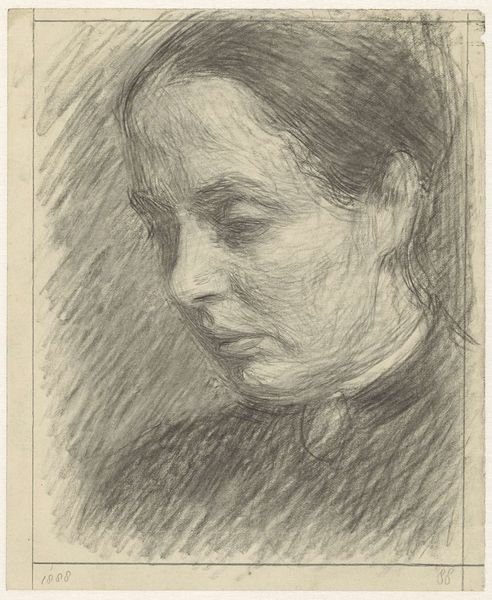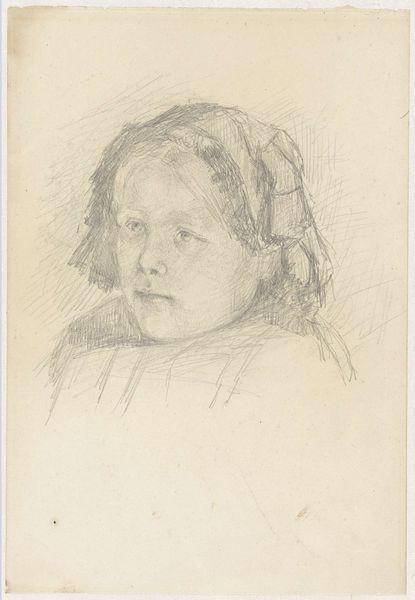
drawing, print, etching, graphite
#
portrait
#
drawing
# print
#
etching
#
pencil drawing
#
graphite
#
portrait drawing
Dimensions: 86 mm (height) x 86 mm (width) (plademaal)
Editor: Here we have "Prøveplade: Pige med tørklæde om hovedet," or "Test Plate: Girl with a Scarf on Her Head," an etching by Frans Schwartz from 1899. The cross-hatching gives it a rather somber and gritty feel. What do you make of this portrait? Curator: For me, it's compelling to consider the socio-economic context in which Schwartz made this work. As an etching, it democratized the image. Printmaking allowed for wider distribution and consumption. The "test plate" aspect you mentioned, further suggests a workshop environment, possibly involving apprentices or collaborations. Who do you think this woman was and her position? Editor: I'm not sure. She has a headscarf on which could imply a working-class background, and this would align with the possibility that you raise of mass production or reproduction... Maybe her position influenced the artwork? Curator: Exactly! The materials—graphite and etching—and the process itself reflect labor. This wasn’t about rarefied oil paints and individual genius, but a reproducible image born out of practical means. We might also consider how such images circulated, reaching different audiences than traditional portraiture. Think about who would have seen this and what they would think. Editor: So, you're saying that even the act of creating multiple prints has a social dimension, connecting the artist to a broader community beyond the art world elite? The "girl" may reflect on a real face found in Schwartz everyday working enviroment! Curator: Precisely. The print becomes a commodity, but also a document of its time, revealing not just an individual face, but the mechanics of artistic production. How does this change your perception of it? Editor: It makes me think beyond the face, considering who had access to art, who made it, and what stories the materials tell. Curator: Indeed. And by understanding those relationships, we gain a richer understanding of the artwork. Editor: This has really expanded my perspective. I see it as less of a single artistic vision and more of a cultural artifact now.
Comments
No comments
Be the first to comment and join the conversation on the ultimate creative platform.

